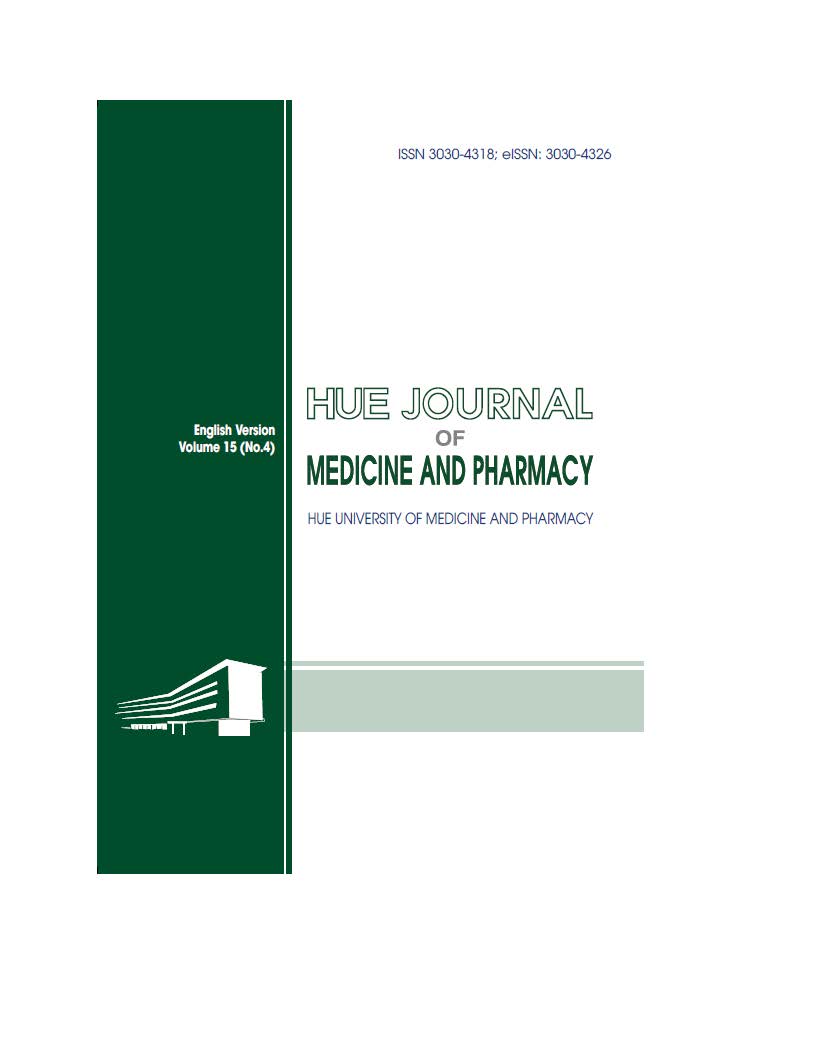Abstract
Background: Numerous international studies have demonstrated that orthostatic hypotension and orthostatic hypertension are risk factors for cardiovascular events and mortality. In Vietnam, awareness and research on this issue remain limited.
Objectives: 1) To assess changes in blood pressure from supine to standing. 2) To investigate the relationship between orthostatic blood pressure changes and risk factors and cardiac impairment.
Methods: A cross-sectional study with a comparison group. The study group consisted of 70 hypertensive patients from the Department of Cardiology from June 2023 to December 2023. The control group consisted of 70 patients without hypertension who attended the Internal Medicine Clinic.
Results: The prevalence of orthostatic hypertension in the hypertensive group (12.9%) was significantly higher than in the non-hypertensive group (2.9%) (p = 0.028 < 0.05). The prevalence of orthostatic hypotension in the hypertensive group (15.7%) was slightly lower than in the non-hypertensive group (18,6%). Among the hypertensive group, there was a significant association between a history of diabetes mellitus and orthostatic blood pressure changes (p = 0.034 < 0.05; OR = 3,17; 95% CI: 1,06 – 9,43); between left ventricular hypertrophy on ECG and orthostatic blood pressure changes (p = 0,038 < 0,05). In the hypertensive group, the prevalence of left ventricular hypertrophy was higher in those with orthostatic blood pressure changes (25,0%) compared to those without changes (6,0%). There was a positive correlation between standing systolic blood pressure and heart rate (r = 0,388; p = 0,001 < 0,05); between supine and standing systolic blood pressure with EF (r = 0,352; p = 0,003 < 0,05), (r = 0,319; p = 0,007 < 0,05); between supine, standing systolic blood pressure and supine diastolic blood pressure with PWV (r = 0,289; p = 0,015 < 0,05), (r = 0,344; p = 0,004 < 0,05), (r = 0,313; p = 0,008 < 0,05).
Conclusion: The prevalence of orthostatic blood pressure changes in hypertensive patients is relatively high. Hypertensive patients need to be assessed for arterial stiffness indices, including PWV and ABI, to enable early detection and prediction of systolic blood pressure difference, thereby improving clinical monitoring. However, treatment-related factors, such as medication type, were not assessed and should be considered in future studies.
| Published | 2025-08-30 | |
| Fulltext |
|
|
| Language |
|
|
| Issue | Vol. 15 No. 4 (2025) | |
| Section | Original Articles | |
| DOI | 10.34071/jmp.2025.4.14 | |
| Keywords | orthostatic hypertension, orthostatic hypotension, orthostatic blood pressure changes |

This work is licensed under a Creative Commons Attribution-NonCommercial-NoDerivatives 4.0 International License.
Copyright (c) 2025 Hue Journal of Medicine and Pharmacy
WHO. Hypertension 2021 [Available from: https://www.who.int/news-room/fact-sheets/ detail/ hypertension].
R. Freeman et al. Consensus statement on the definition of orthostatic hypotension, neurally mediated syncope, and postural tachycardia syndrome. Clin Auton Res. 2011;21(2):69-72.
A. Joseph et al. Orthostatic hypotension: A review. Nephrol Ther. 2017;13(1):55-67.
Tran Cong Duy. Diagnosis and treatment of orthostatic hypotension. Ho Chi Minh City Cardiology Association. 2013.
Vietnam Cardiology Association. Recommendations of the Hypertension Subsection - Vietnam Cardiology Association (VSH/VNHA) 2022 on the diagnosis and treatment of hypertension. Recommendations on Diagnosis and Treatment of Hypertension. 2022.
Fan XH, Wang Y, Sun K, Zhang W, Wang H, Wu H, Zhang H, Zhou X, Hui R. Disorders of orthostatic blood pressure response are associated with cardiovascular disease and target organ damage in hypertensive patients. Am J Hypertens. 2010 Aug;23(8):829-37.
Jordan J, Ricci F, Hoffmann F, Hamrefors V, Fedorowski A. Orthostatic Hypertension: Critical Appraisal of an Overlooked Condition. Hypertension. 2020 May;75(5):1151-1158.
Jordan J, Biaggioni I, Kotsis V, Nilsson P, Grassi G, Fedorowski A, Kario K. Consensus statement on the definition of orthostatic hypertension endorsed by the American Autonomic Society and the Japanese Society of Hypertension. Clin Auton Res. 2023 Feb;33(1):69-73.
Dang Le Minh Tri and Le Kieu Minh. Study on the prevalence and risk factors of orthostatic hypotension in elderly hypertensive patients at Military Hospital 175. Journal of Medicine - Practical Pharmacy 175. 2021.
H. J. Chi et al. The association between orthostatic blood pressure changes and subclinical target organ damage in individuals aged 60 years or older. J Geriatr Cardiol. 2019;16(5):387-94.
N. Magkas et al. Orthostatic hypotension: From pathophysiology to clinical applications and therapeutic considerations. J Clin Hypertens (Greenwich). 2019;21:426-554.
Low PA, Tomalia VA. Orthostatic Hypotension: Mechanisms, Causes, Management. J Clin Neurol. 2015 Jul;11(3):220-6.
A. Guerin et al. Factors associated with orthostatic hypotension in hospitalized elderly patients. Aging Clin Exp Res. 2016;28(3):513-7.
Nguyen Trong Hieu. Prevalence of left ventricular hypertrophy and related factors in hypertensive individuals aged 18 and older in Binh Chanh district, Ho Chi Minh City in 2022-2023. Vietnam Medical Journal. 2023;531.
Julien J, Tranche C, Souchet T. [Left ventricular hypertrophy in hypertensive patients: epidemiology and prognosis. Arch Mal Coeur Vaiss. 2004;97(3):221-7.
Nguyen Duc Hoang and Le Thanh Hai. Study on the prevalence and risk factors of orthostatic hypotension in elderly hypertensive patients. Vietnamese Journal of Cardiology. 2014;65(50-57).
Vu Van Nga and Do Thi Quynh. Some cardiovascular risk factors among university staff in Hanoi in 2016. Journal of Science, VNU: Medical and Pharmaceutical Sciences. 2016;34(2):89-96.
Le Thanh Chien and colleagues. Survey on the correlation between hypertension, BMI, waist circumference, and waist-to-hip ratio in residents of Hoa Thanh ward, Tan Phu district. Ho Chi Minh City Medical Journal. 2011;15(4).
Luo YY, et al. Risk factors for peripheral arterial disease and the relationship between low ankle-brachial index and mortality from all-cause and cardiovascular disease in Chinese hypertensive patients. J Hum Hypertens. 2007;21:461-6.
Morillas P, Cordero A, Bertomeu V, Gonzalez- Juanatey JR, Quiles J, Guindo J, et al. Prognostic value of low ankle-brachial index in hypertensive patients with acute coronary syndromes. J Hypertens. 2009;27(2):341-7.
Gibbons CH, Schmidt P, Biaggioni I, Frazier-Mills C, Freeman R, Isaacson S, et al. Recommendations from a consensus panel for the screening, diagnosis, and treatment of neurogenic orthostatic hypotension and associated supine hypertension. J Neurol. 2017;264(8):1567-82.






